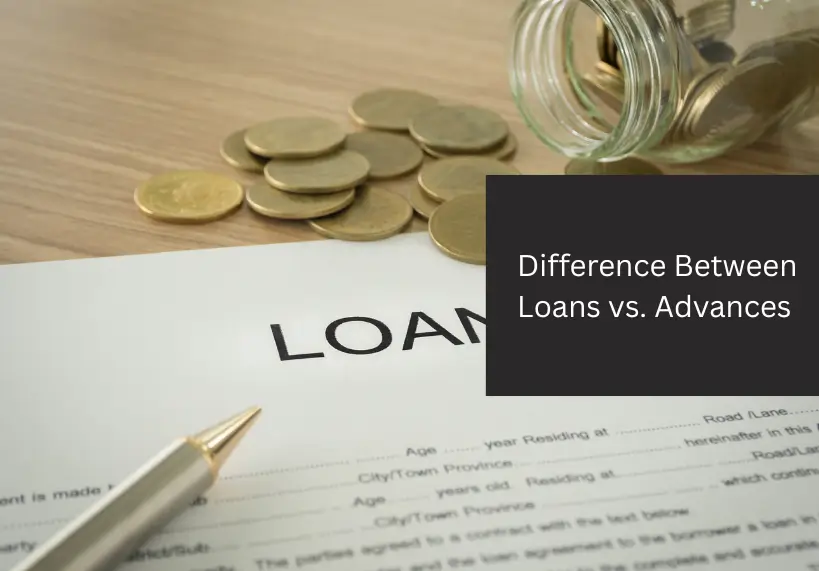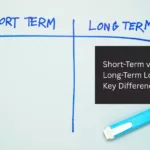
When you’re low on funds and looking for help, you might come across the terms loan and advance. They often seem similar because both involve borrowing money. But there’s a clear difference between the two, and not knowing it can lead to confusion, delays, or even extra costs.
A loan is usually for a larger amount for longer-term borrowing, such as financing a big business plan or purchasing a home. An advance, on the other hand, is meant for short-term needs like covering monthly expenses or managing small cash gaps.
Many people confuse the two, especially when you’re in a hurry to arrange funds. That’s why understanding “how each option works” and “when to choose which” can make things a lot smoother. It helps you get the money you need, in a way that’s right for your situation and easier to manage.
What Are Loans and Advances?
In simple terms, loans and advances are credit facilities provided by banks or NBFCs. Both allow you to borrow money, but the amount, repayment terms, and purpose can differ significantly.
- A loan is a financial product offered for a fixed term. It involves borrowing a set amount and repaying it over time with interest. Before granting a loan, lenders consider various factors, including your income, collateral, and credit score. Common types include car loans, home loans, personal loans, and business loans.
- An advance, on the other hand, is a short-term facility designed to cover immediate financial needs. These may last from a few days to a year and are commonly used by both individuals and businesses. They’re sometimes referred to as cash advances, salary advances, or even payday loans.
Understanding the difference between loans and advances helps you make smarter borrowing decisions depending on how quickly you need funds and how long you’ll take to repay them.
Different Types of Loans and Advances
Let’s explore the most common forms of both.
Types of Loans
Loans are generally divided into secured and unsecured categories:
- Secured Loans – You must pledge some asset for these type of loans, such as gold, real estate, or a vehicle. Because the lender bears less risk, interest rates for secured loans are lower. Examples include home loans, auto loans, and gold loans.
- Unsecured Loans – No collateral is needed, but approval depends on your creditworthiness and repayment history. As a result, these tend to carry higher interest rates. Personal loans, education loans, and wedding loans fall under this category.
You’ll also find MSME loans, specially designed for micro, small, and medium-sized enterprises to support business growth and operational expenses.
Types of Advances
Advances come in different forms, mainly for short-term use:
- Overdraft Facility – Up to a certain limit, this allows you to withdraw more money than is available in your current account.
- Cash Credit – Provided against inventory or receivables, this lets businesses access working capital as needed.
- Payday Loans – Generally offered to salaried employees, these are short-term, high-interest loans intended to be repaid with the next salary credit.
- Bill Discounting/Purchase – A financing method where a business gets funds by presenting unpaid invoices or bills as collateral.
Note: Payday loans in India are typically offered by licensed fintech lenders and may carry higher interest rates. Ensure you’re borrowing from an RBI-registered NBFC or bank.
Both loans and advances can help, depending on the situation. Knowing the type of credit facility that best matches your needs is the first step in making an informed choice.
Key Differences Between Loans and Advances
Here’s a clear breakdown of the difference between loans and advances based on important factors:
1. Purpose of Use
Loans are usually taken to meet long-term financial requirements, like buying a house, funding education, or expanding a business. Advances, however, are intended for short-term needs like managing cash flow or handling urgent expenses.
2. Loan Amount
Loans are typically larger in value and are meant for big investments. Advances are for smaller amounts to bridge temporary financial gaps.
3. Duration
Loans have a longer repayment tenure, often spread across several months or years. Advances are short-term in nature, ranging from a few days to a year.
4. Repayment Structure
Loans are repaid through fixed EMIs (Equated Monthly Instalments) set at the beginning of the loan period. Advances offer more flexibility and can be repaid based on the borrower’s agreement with the lender.
5. Approval Process
Loans go through a more detailed verification process involving credit checks, documentation, and often collateral. Advances are quicker to access and may be pre-approved based on account activity or existing business relationships.
6. Security/Collateral
Loans can either be secured or unsecured, depending on the type. Advances are typically unsecured, especially when they are offered to regular account holders or salaried individuals.
7. Interest Rates
Since loans are usually tied to either collateral or creditworthiness, they tend to carry lower interest rates. Because advances are short-term and unsecured, they frequently have higher interest rates.
8. Risk for Lenders
Loans pose a lower risk for lenders, especially secured ones. Advances carry a higher level of risk since they are offered with minimal paperwork and often without any collateral.
9. Legal Formalities
Loans involve more legal and documentation requirements. Advances, by contrast, are often simpler to process with minimal paperwork.
10. Processing Time
Due to the lengthy checks and documentation, loans take longer to be sanctioned. Advances are quicker and sometimes available instantly to eligible customers.
Loan vs advance: What Should You Choose?
It all depends on what you need money for. If you need a big amount for things like buying a house or paying for college, then a loan is a better choice. Loans give you more money and more time to pay it back. But if you only need a small amount for a short time like for your business or an emergency then an advance is a better option. Just think about how much money you need and how soon you can return it, and choose what fits best.
Conclusion
Knowing the difference between loans and advances is more than just knowing definitions, it’s about using the right tool for the job. Whether you’re applying for a business loan, an MSME loan, or simply need a short-term cash boost, your choice impacts your budget, credit score, and peace of mind.
Now that you know what are loans and advances and the major difference between them, you’ll be able to make an informed financial decision.
Frequently Asked Questions
What is the main difference between loans and advances?
Loans are usually taken for long-term needs and are repaid over months or years. Advances are short-term credit facilities meant for immediate or temporary expenses.
Can I get a loan without giving any security?
Yes, you can apply for unsecured loans such as personal loans or education loans. These do not require collateral but are given based on your credit score and income.
Are advances only for businesses?
No, advances are available for both individuals and businesses. For example, salaried individuals can apply for payday loans or salary advances, while businesses can access cash credit or overdraft facilities.
Which has a higher interest rate – loan or advances?
Generally, advances have higher interest rates because they are usually short-term and often unsecured. Loans, especially those that are secured, usually come with lower interest rates.
When should I choose an advance instead of a loan?
An advance is ideal when you need money urgently for a short period, like managing month-end expenses, paying rent, or covering a sudden bill. Loans are better suited for bigger, long-term financial goals.








